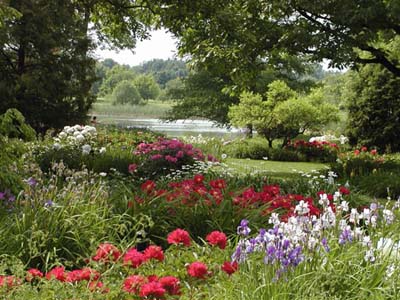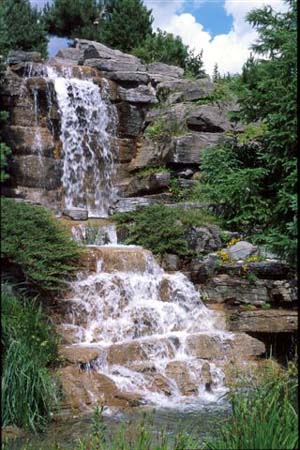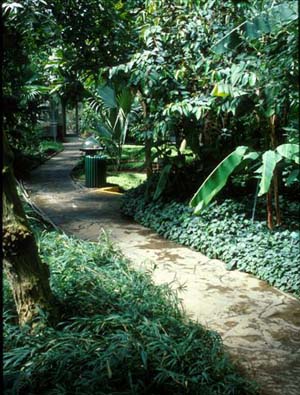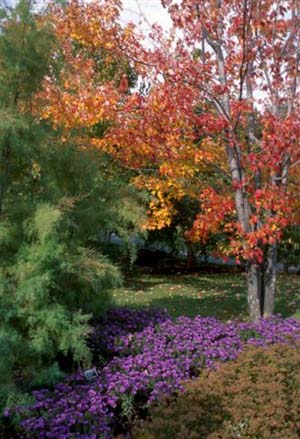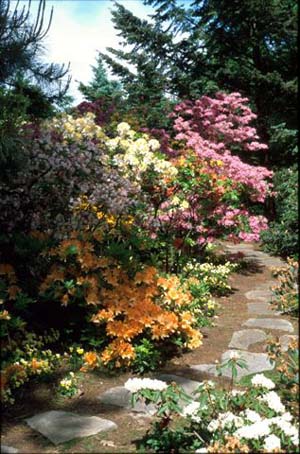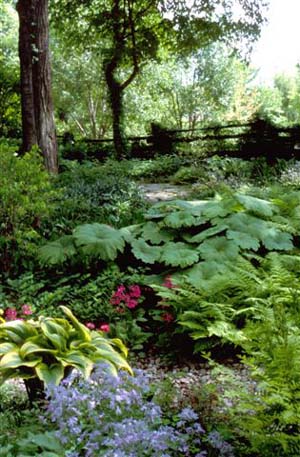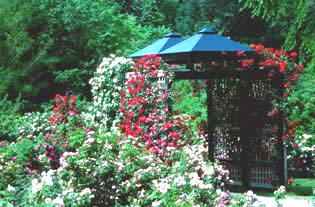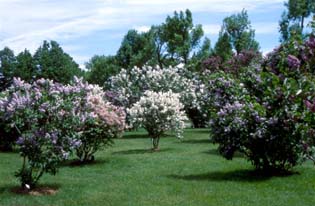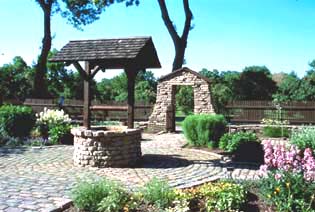|
|
Montreal's
Botanical Garden The year 2006 is momentous for one of the most renowned gardens in North America; the Montreal Botanical Garden is celebrating its 75th Anniversary. And if you haven’t been before, this is the year to go. A favourite destination for non-Canadians and Canadians alike, Montreal is considered one of the most cosmopolitan cities on the continent. It is also a city where outdoor spaces are as carefully integrated into its urban plan as are indoor spaces. At the city's botanical garden this year, there will be plenty of special activities, and the gardens will be looking their best. |
|||
HISTORY OF THE GARDEN The garden is the result of a dream by a man named Brother Marie-Victor in. He was both a religious man and a scientist, with a profound love of nature. He founded the Botanical Institute of the Université de Montréal in 1920, and in 1925 declared his vision for a great botanical garden in the city. The garden became a reality during the Great Depression. Thousands of Montrealers were out of work and the Mayor of the city employed them to build the Garden rather than simply paying relief money. For 75 years the garden has continued to grow and expand, and is now one of the largest botanical gardens in the world. There are 22,000 plant species and cultivars, 10 exhibition greenhouses, 30 theme gardens, and dozens of researchers and staff. A GARDEN FOR AN ENTIRE CITY It takes at least a day to tour the whole 183 acres of the Montreal Botanical Garden. Fortunately there are mini-trains to carry you around the site during the growing season of May through October. Each day brings new growth and blossoms to see, each month changes the whole aspect of the garden. With so much to see, I’ve chosen a few of my favourite spots to share with you. The Lilac Glen In many countries, lilacs are a favourite spring flower because of their colour and fragrance. A stroll through this garden filled with the heady scent of lilacs and the beautiful forms and colours of the blooms is an enchanting use of time. There are approximately 400 shrubs on the gentle slope, all pruned to a height that most noses can reach. The Courtyard of the Senses In this garden you don’t need your sense of sight, in fact it is best “viewed” with your eyes closed; and is an excellent example of how gardens can be designed to include the visually impaired. The plants were chosen for their special properties and were originally intended for such visitors. Furthermore, the garden is a tactile one, divided into four sections that allow you to explore four different sensations – soft, rough, prickly, and sticky. The plants are laid out within touching or smelling distance, and each is labelled in French, English, and Braille. In the centre of the courtyard is a fountain and the water provides both a soothing sound and an audible reference point. The Flowery Brook This is an English-style garden with a profusion of blooms in all colours and sizes, from spring throughout summer. Starting in June are irises, peonies, and daylilies, followed in succession by other perennials in a symphony of colour. It gets its name from the brook that meanders through the garden. The Garden of Innovations As the name suggests, this is an avant-garde garden where you can examine the latest plant varieties and new trends in landscaping. You’re sure to find something you want to try in your own garden, and each year features new ideas. The Monastery Garden A peaceful and tranquil spot, a Monastery Garden was intended as a place to grow medicinal plants as well as to meditate. In the Middle Ages the plants were cultivated within the walls of cloisters, and included such aromatic plants as European wild ginger, spearmint, and chervil. So important were the gardens that a city ordinance was passed in the year 1812 making the practice law. The First Nations Garden Although this garden was opened in 2001, it was an original part of Brother Marie-Victorin’s dream. It represents the kinship between the First Nations and the plant world, where plants provided food, medicine, and fiber for transportation, homes, and utensils. It also offers an opportunity for the First Nations to share their traditions, earth-based wisdom, and skills that have been passed down for thousands of years. An Attikamek Legend
The Shade Garden This is awonderful spot on a hot Montreal afternoon in which to find the cool, refreshing shade of tall trees. But there are many more plants here than trees. You’ll find the first flowers of spring, and later there are primroses, astilbes, hostas, and ferns. This is followed by plenty of colour throughout the summer in shades of green, pink, blue, and white. If you thought shade gardens were lacking interest, this one will prove otherwise. The Greenhouses These houses are open all year round with permanent and changing exhibitions of plants and flowers. But it is in the winter that they are most cherished. In Canada, they give us a hint of summer amid frigid temperatures, and overflow with vegetation and flowers when outside all is cold and white. While all are interesting, and carry visitors off to different parts of the world via their vegetation, the Economic Tropical Plants Greenhouse solves the mystery of where chocolate and cinnamon come from, what a banana tree or coffee plant looks like, and teaches visitors about the hundreds of common and not-so-common uses of tropical plants. The Rose Garden This is a piece of heaven on earth for rose lovers. There are 10,000 roses in the collection, blooming from mid-June to October. Although young by many rose garden standards – it was created in 1976 – it has won the prestigious “Award of Garden Excellence” in 2003. This is an international award presented by the World Federation of Rose Societies every three years. Visitors approach the garden along winding paths lined with many trees and shrubs, a number of fountains, arches and pergolas covered in lovely climbing roses. Of course they can also find their way by following the delicate and exquisite fragrances. The Rose Garden has nearly 160 varieties of wild roses, 180 varieties of old roses, close to 500 hybrids of contemporary shrub roses, including varieties developed by Agriculture Canada, and almost 220 non-hardy species, including a large number of tea and floribunda hybrids. When Jack Frost comes knocking, the Rose Garden team must cover several beds with huge thermal blankets, the only way of protecting many of the species. The City Gardens Another excellent opportunity for garden enthusiasts, these gardens are designed and produced by landscaping experts and provide plenty of ideas that you can incorporate into your own yard. Be sure to bring a notebook and camera. BOTANICAL RESEARCH: NOT JUST A PRETTY GARDEN Besides maintaining the hundreds of trees, shrubs, and flowers, the Montreal Botanical Garden is actively involved in botanical research as well as research on Ecology and Environmental Concerns. Its horticulturalists are studying the botanical challenges of Araceae (including family members as diverse as the Calla Lily and the Skunk Cabbage) and Begoniaceae (the Begonia Family). They are researching the feasibility of using aquatic plants to treat water, studying the competition for space among plants, restoring habitats, and examining fungi for their good and bad traits. FOR MORE INFORMATION Give yourself a gift and visit the Montreal Botanical Garden during its 75th anniversary. Join the more than one million visitors annually who enjoy all the Garden has to offer. The
Montreal Botanical Garden When touring the garden plan for one hour in order to visit the greenhouses, and two to five hours to tour the outdoor gardens. |
||||
Photographs courtesy of the Montreal Botanical Garden |
||||
